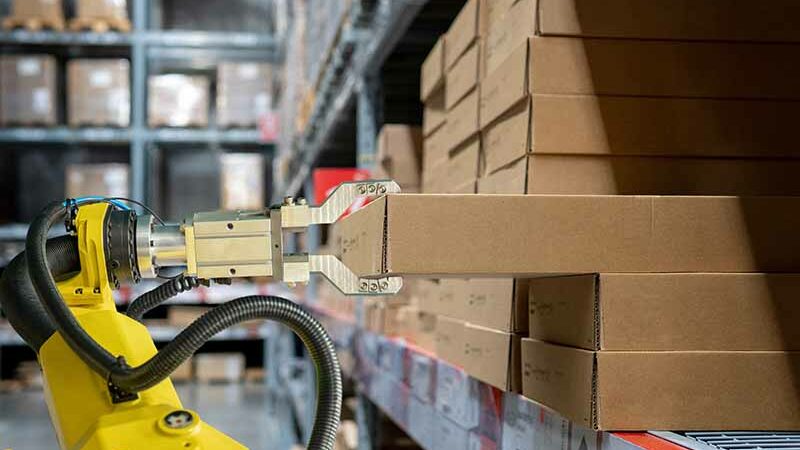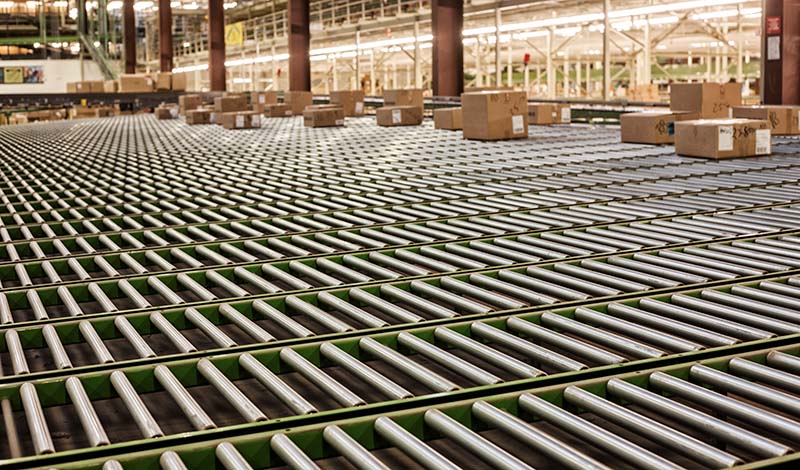
What is a goods-to-person system exactly? Also referred to as GTP, goods-to-person is a model that is deployed in order preparation and delivery. When operating this model, the goods themselves are delivered to the person tasked with order picking rather than the human order picker moving to meet the goods.
A GTP system utilizes automated solutions that will collect and then deliver the goods, ready to be packed up into a consignment. This means there is no need for personnel to move around the warehouse, identifying and sourcing goods ready to be packed. This identification, sourcing and delivery is handled exclusively by the automated technology.
But how do you go about implementing this type of system? Implementation needs to be carried out by experts who not only know the industry but also understand the specific needs of your business.
This is where our team can make a real difference for your business. Here at Process Equipment & Controls, we are proud to provide a range of automated and robotic solutions to our clients, integrating these solutions into their unique business models. Reach out today for a consultation, and let’s get started.

Many businesses are looking for new ways to automate their packing and picking operations in order to boost efficiency and productivity. One option that is gaining popularity is goods-to-person automation, which involves using mini-load systems to move inventory around a warehouse or distribution center.
This type of automation can help to streamline order fulfillment by reducing the need for manual labor. In addition, it can also help to reduce errors and improve safety by eliminating the need for workers to climb on top of racks or lift heavy items. As a result, goods-to-person automation is a great way to boost efficiency in your packing and picking operations. Take a look at some of the key benefits to efficiency and productivity.
1
Human personnel are still involved when the GTP model is deployed, but they do not have to move around the warehouse space in the same way they would have to under a person-to-goods order-picking model. Even when staff members are highly trained and highly experienced, the process of moving space in search of items to be picked, and then taking these items to a central packing location ready for dispatch, is highly inefficient.
The automated solutions involved in the goods-to-person pick process deliver the items where they are required with far higher levels of efficiency. This in turn reduces costs and improves relationships with partners across the entire supply chain. Safety is also greatly improved – with less movement around the warehouse space, there is far less danger of accident and injury or damage to property.
2
An error can quickly become serious in the supply and distribution industry. If an order is picked incorrectly, the recipient is not going to be pleased, and this may harm your reputation. In addition, you may find that you need to fulfill the order again, resulting in wastage and shrinkage costs that are borne by your organization. If this happens on a repeated basis, the costs can very quickly begin to mount up.
With a person-reliant picking system – even a guided pick-to-light system – human error can never be wholly eliminated. Switching to an automated picking system means that these repetitive tasks are handled with far greater reliability. This increased efficiency in order picking can save organizations hundreds of thousands of dollars, preventing the need to write off and redo orders.
3
At a fundamental level, GTP is simply faster than other models for order picking and goods delivery. The aim for warehouse management teams is always to accelerate the process without compromising on the accuracy and reliability of the packing procedure. GTP makes this easy.
The GTP system itself is controlled and overseen by warehouse management software – a solution designed to help business owners stay on top of how their teams are performing out there on the floor. This centralized software solution enables warehouse teams to analyze, hone and tune up their operating protocols, providing even more potential for improvement. With more traditional person-to-goods models, ongoing improvement and scaling is more difficult.

Before you can implement GTP technologies within your business, you need to decide on which type of tech to use. The two main types of goods-to-person technologies are autonomous mobile robots (AMRs) and automated storage and retrieval systems (AS/RSs).
1
An autonomous mobile robot, also known as an AMR, is a piece of automated technology that makes its own way around the warehouse space, finding the items to be picked and bringing them to the packing location. In this sense, AMRs work in the same way as a human team member might work on a manual model — only they do so with greater efficiency and safety.
AMRs achieve their autonomy thanks to a number of sophisticated sensors built into their design. These sensors are orchestrated via a centralized control software that gathers and interprets data as the AMR moves around the space, and the robot will grow its understanding of the warehouse operations through machine learning processes. Further control and data management are achieved via an overarching warehouse management solution.
Types of AMR
The points of difference between types of AMR generally relate to the roles of the robot itself. Some AMRs may be used to stack crates and handle other actions at the picking stations, while others may require a high level of capacity that enables them to follow complex routes. Other AMRs may be deployed quickly and efficiently on an ad hoc basis.
2
Automated storage and retrieval systems, or AS/RSs, are more suited to high-density storage environments. Rather than moving around the warehouse environment like an AMR would, the AS/RS is an inherent part of this environment. Items are stored within the AS/RS and also retrieved and delivered via the system itself.
For example, an item may be stored in Section A of the AS/RS. When this item is required, the autonomous control triggers the delivery mechanism within Section A, releasing this item onto a conveyor belt or another piece of warehousing equipment so that it can be transported to the picking location.
Types of AS/RS
Different types of AS/RS are available, depending on the specific needs of your warehousing operation. Some of our clients prefer carousel-based AS/RS goods-to-person solutions, delivering items ready for packing on an ongoing basis and optimizing the use of space. Vertical lift modules are also useful in locations where floor space is at a premium. Others prefer shuttle systems, or storage solutions with far higher capacity, ready for operational scaling in the future.
Do you want to discover more about how a goods-to-person system can benefit your warehousing operation? Perhaps you’d like to implement these GTP solutions within your own packing and picking processes? Reach out to our team today and let’s chat about what you need.